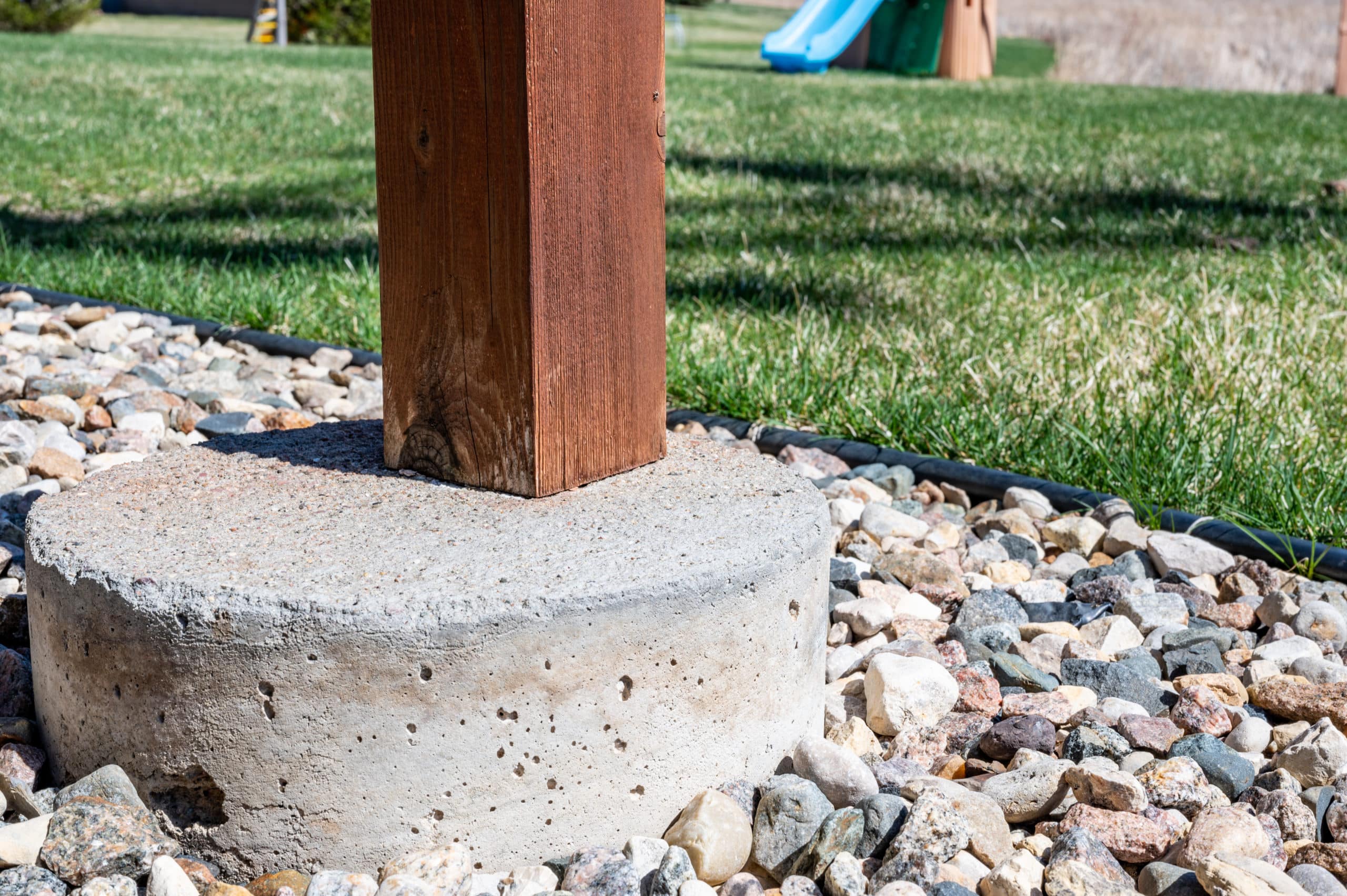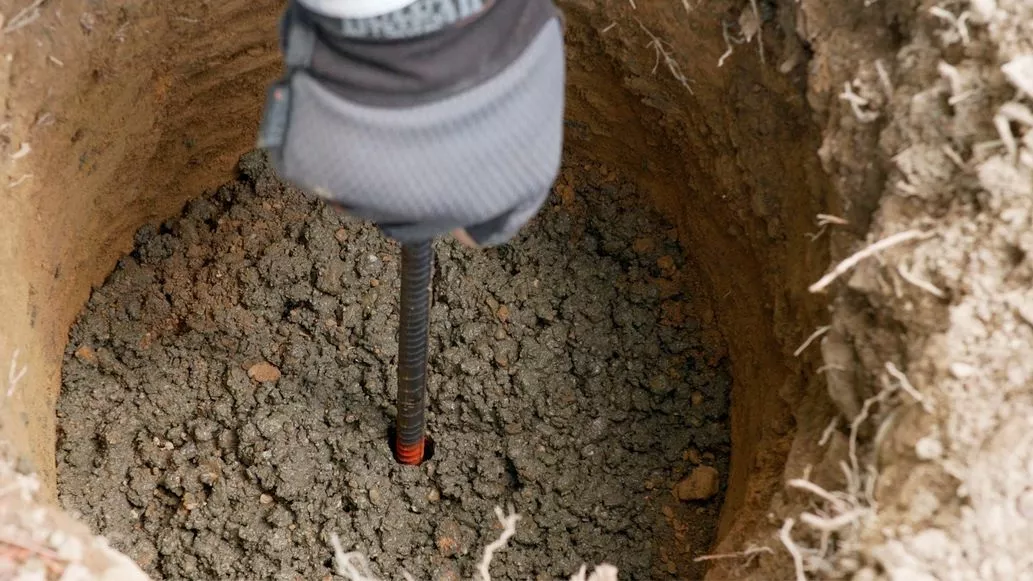Professional Tips for Putting Up Deck Footings to Assistance Your Outdoor Space
When it comes to building a deck, one of the most crucial aspects to take into consideration is the setup of proper footings. These footings are the foundation upon which your outdoor space will rest, offering stability and assistance for years to come. What exactly does it take to install deck grounds appropriately?
Importance of Proper Deck Footings
Proper deck grounds are important for guaranteeing the security and durability of your outside space. When creating a deck, it is vital to take note of the structure on which it will rest. Deck grounds give the needed support for the entire framework and help disperse the weight uniformly - Deck Footings. Without strong and properly set up footings, your deck may come to be unsteady, leading to safety and security dangers and expensive repairs.

Along with security, appropriate deck footings also contribute to the longevity of your outside space (Deck Footings). Grounds that are created and built to stand up to the elements and dirt conditions in your location will certainly assist prevent the deck from changing or settling in time. By ensuring the grounds are appropriately sized and mounted, you can reduce the danger of damages to the deck structure, extending its life expectancy and decreasing the demand for expensive repair work or substitutes

Choosing the Right Kind Of Grounds
When picking the proper sort of grounds for your deck, it is essential to take into consideration elements such as soil problems, local building ordinance, and the overall design of your outdoor space. The type of footing you select will play a vital duty in making certain the security and long life of your deck.
One typical kind of footing is the concrete footing. Concrete grounds are suitable for many dirt problems and supply superb assistance for decks.
Sometimes, you might need to use specific footings, such as heap footings or deep foundations, if you are building a multi-level or large deck. These footings are made to disperse the weight of the deck over a larger area, making sure security and stopping clearing up or sinking.
Prior to selecting a type of footing, it is necessary to consult local building regulations and laws to make certain conformity. Furthermore, consider the design and planned use your outside space. Factors such as the dimension, form, and load-bearing demands of your deck will affect the kind of footing that is most appropriate.
Preparing the Ground for Footing Installation
To properly prepare the ground for footing installment, it is very important to assess the soil problems and take necessary actions to make sure security and toughness of the deck. The very first step is to dig deep into the location where the footings will certainly be set up. The deepness of the excavation will certainly rely on the frost line in your region and the particular demands of the deck style. It is important to eliminate any plant life, rocks, or debris from the excavation to ensure a strong structure.
When the location has actually been dug deep into, the next action is to portable the soil. This can be done using a plate compactor or by utilizing a hand meddle. Compacting the soil aids to get rid of any spaces or air pockets, which can bring about clearing up and instability over time.
After compacting the soil, it is crucial to lay a layer of crushed rock or smashed stone at the bottom of the excavation. This will provide water drainage and aid to avoid water from merging around the grounds, which can bring about disintegration and instability.
Step-by-Step Overview to Installing Deck Footings
After appropriately preparing the ground for footing installment, the following action is to begin the procedure of mounting deck grounds. This detailed overview will certainly offer you with a clear understanding of exactly how to mount deck grounds for your exterior room.
Figure out the location: Start by marking the positions of the deck footings using risks and string. Make sure that the areas straighten with the layout and format of your deck.
Dig the holes: Use a message hole digger or an auger to dig the holes this website for the grounds. The deepness and diameter of the openings ought to be in accordance with local building codes and the particular demands of your deck design.
Level the holes: Use a level to guarantee that the openings are dug to the correct deepness and are level with each other. (Deck Footings)
Include crushed rock: Area a layer of gravel at the base of each opening to enhance drainage and prevent the wood from decomposing.
Place the footings: Position the grounds into the openings, making certain they are degree and plumb. Use a level and a measuring tape to make sure precision.
Protect the footings: Put concrete into the openings around the grounds, filling them to the top. Utilize a message degree to guarantee the grounds stay level as the concrete collections.
Enable time for curing: Allow the concrete remedy according to the producer's guidelines prior to proceeding with the deck construction.
Usual Errors to Avoid Throughout Footing Installment
One crucial aspect to take into consideration during the installment of deck grounds is avoiding usual mistakes that can endanger the stability and long life of your outside space. While deck footings might seem like a easy and uncomplicated part of the construction process, overlooking particular aspects can bring about costly fixings and potential safety and security hazards down the line.

In addition, neglecting to mount proper water drainage steps can create water to gather around the grounds, resulting in rot, degeneration, and the ultimate weakening of the deck's structure. In addition, utilizing the incorrect kind of footing material or visit this web-site failing to properly secure the grounds can jeopardize their architectural integrity.
To stay clear of these mistakes, it is necessary to speak with a professional or comply with industry guidelines to make sure correct ground installation. By doing so, you can make sure the security and longevity of your outdoor area, supplying a secure and satisfying environment for many years to find.
Verdict
Finally, setting up correct deck grounds is essential for the security and long life of your outdoor space. By choosing the best kind of footings and effectively preparing the ground, you can ensure a strong structure for your deck. Following a step-by-step overview and staying clear of common mistakes throughout footing installment will certainly even more improve the my response durability and safety of your deck.
Proper deck footings are necessary for making certain the security and long life of your outside area. The grounds offer as a connection between the deck and the ground, allowing the weight of the deck and its occupants to be distributed uniformly into the soil.One usual kind of ground is the concrete ground. Place the footings: Position the grounds into the openings, making sure they are level and plumb. Secure the grounds: Put concrete into the holes around the footings, loading them to the top.